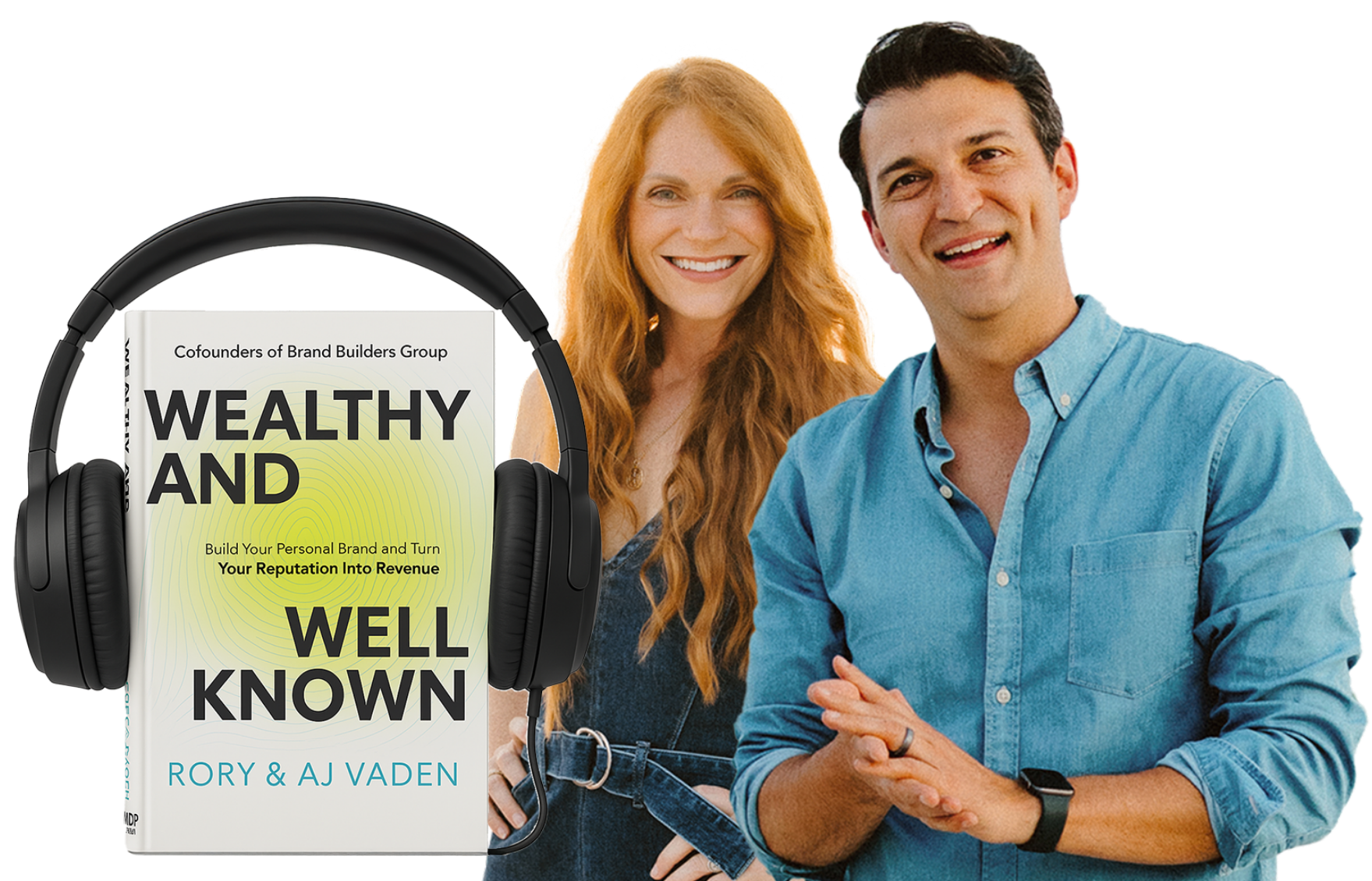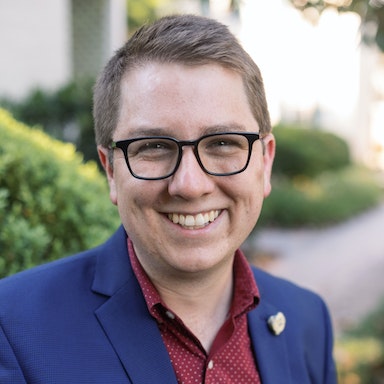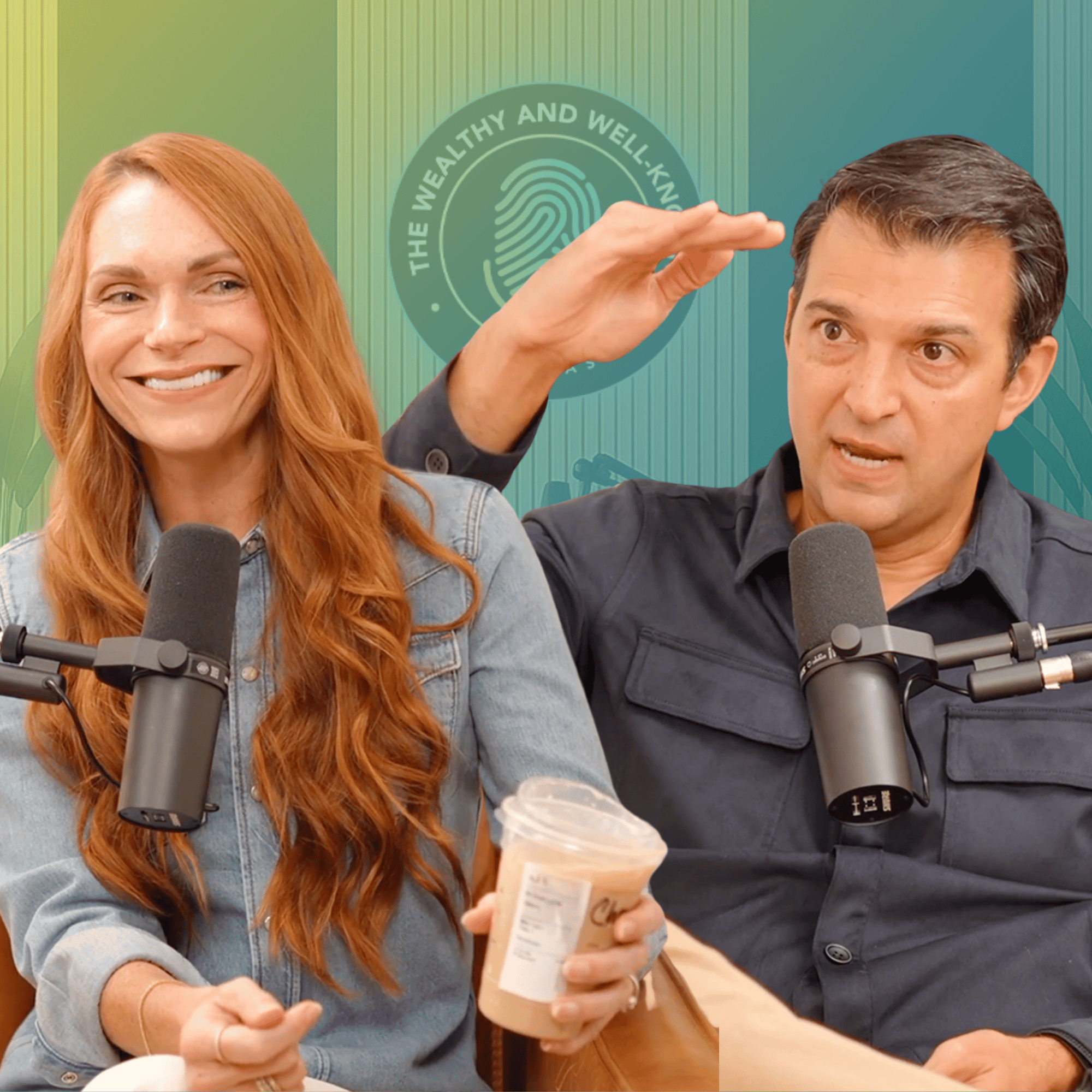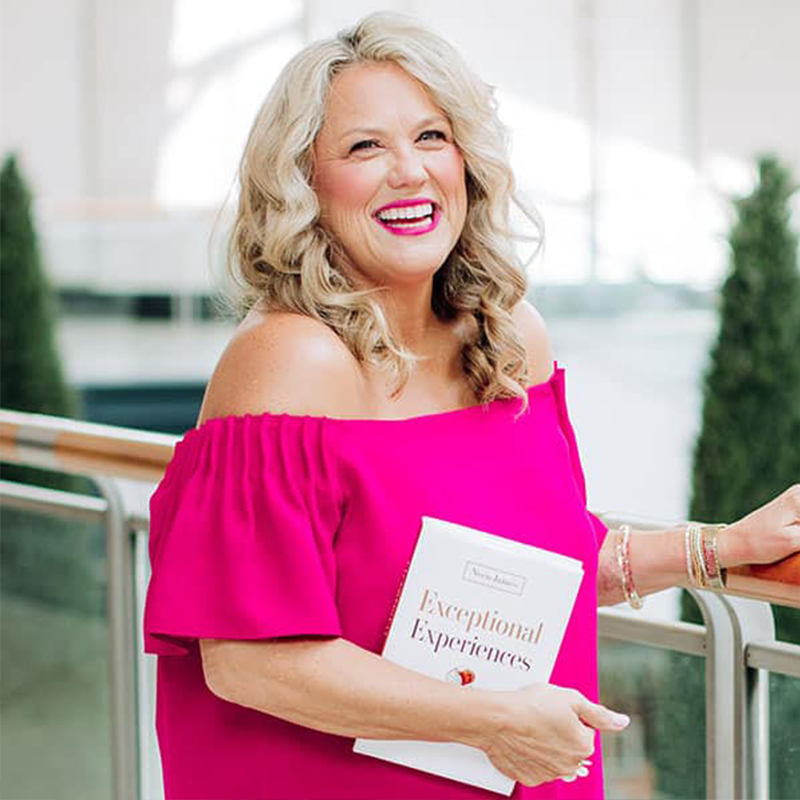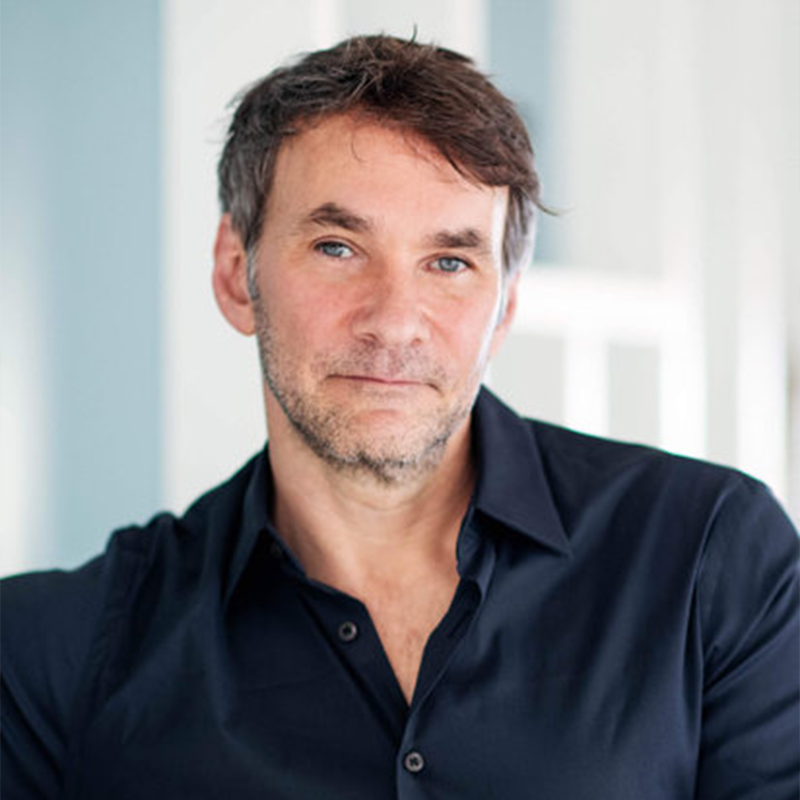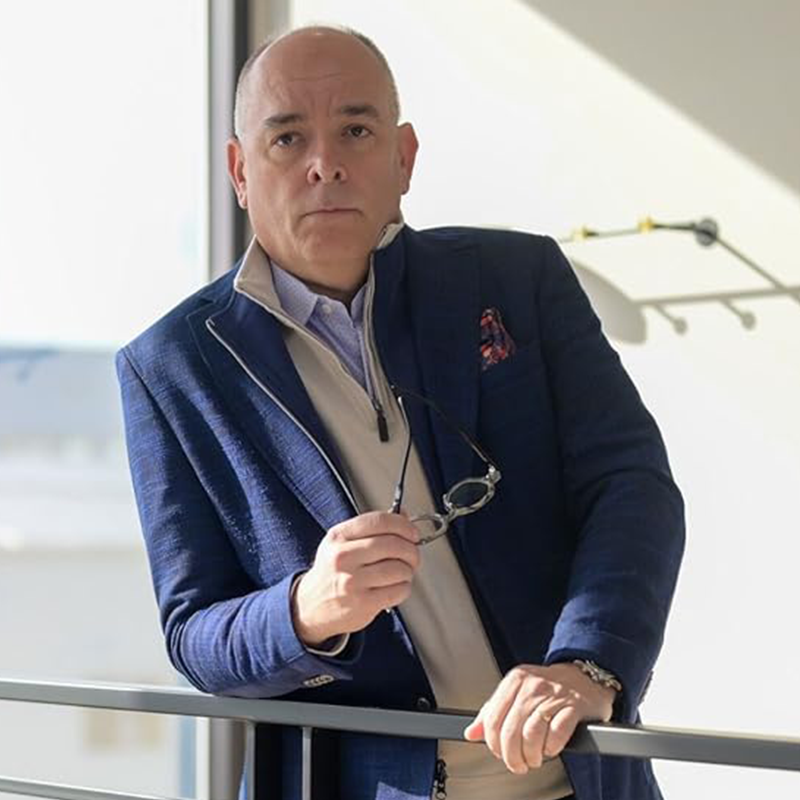RV (00:02):
Well, today we’re gonna talk about a really important topic, membership sites, and a favorite topic of mine. And you’re gonna get to hear from one of my favorite people in the world on that topic, John Meese. So I’ve known John kind of loosely for years because he’s, he’s helped multiple people build membership sites. These, you know, six figure seven figure membership sites, specifically Platform University, which used to be owned by Michael Hyatt, who of course is good friend of ours, of mine, and AJ’s, Michael and Gail. And we’ve known Michael for years and he’d been a mentor and a friend. And so that’s how I met John. And Michael sold Platform University a few years ago. And I think around that time is when John started taking his expertise out and helping coaches and, and trainers and consultants and just anybody who’s out there to build wealth by starting an online business. And specifically, I think, you know membership sites. So he’s also the author of a bestselling book called Survive and Thrive, how to Build a Profitable Business in Any Economy, including this one. He’s bilingual in Espanol, and he just moved to Puerto Rico where he’s saving money on taxes, although that’s not why he’s went there primarily. But anyways, buddy, it’s good to have you here.
JM (01:23):
Thank you, Rory. It’s good to be here. It’s good to be here. Is the interview today gonna be bilingual or are we stick in English?
RV (01:28):
Yeah, no, I, yeah, we’re gonna do it in Spanish, man. Yes, you and me. It’s gonna be a back very, very short interview. . . It’s gonna be about 30 seconds, but so in all seriousness membership sites, why, let’s start with why membership sites? Sure. Why should, why should people be thinking about membership sites as a business model? And maybe even just kind of clarify what, what you classify, like what counts as a membership site and exactly what it means.
JM (02:02):
Yeah, so there are a lot of subscription type businesses, so I think it’s probably helpful to start by saying that my focus is generally helping people turn wisdom into wealth by building a thriving online education business. And so that’s a lot of the same work you do Rory, with Brand Builders Group of helping people build personal brands where there’s an educational component sometimes that looks like a course or coaching program or a life event or books. But memberships are the subscription version of that. And so some of my favorite membership sites that I’ve been a part of myself you know, you’re typically paying a monthly or annual fee to be part of a community where you get access to a combination of training, support, community. It’s more, there’s definitely more of a peer element than if you were maybe in like just watching a course.
JM (02:48):
Cuz often courses online courses are typically very kind of, you’re consuming it. And then that’s kind of it, like, there’s not usually a lot of community interaction, but community is a key part of membership sites. So there’s really two primary reasons to want a membership site in your business. One of them is kind of the obvious one, which is that when you build recurring revenue, now all of a sudden, every month you get to start knowing that you have a reliable recurring revenue coming in from customers who’ve subscribed to pay you automatically. I, like John Orlow calls this the the automatic customer, and I like that idea. I was just saying like, that’s a great book, you make the sale once. Yeah, it’s a great book. And, and it’s a great concept too, of just the idea that each month you’re like, well, I automatically have customers, I don’t have to start with zero.
JM (03:31):
So that’s huge. And recurring revenue can really grow over time to become an incredible source of generating wealth. But the flip side of that is also, it’s a phenomenal way to serve to serve your clients, to serve your customers and your audience. Because the reality is what, I mean, the academic churn is typically MOOCs or massive open online courses for like, what we know is like an online course where you buy it, it sits on the digital shelf somewhere, maybe you watch it. And historically, the, I mean just kind of industry-wide, the completion rates on online courses are very low. And the success rate of someone taking an online course and actually going to do it, actually do the work and succeed, which of course is what you want, not just their money. That’s also very low. Membership sides allow you to take the same kind of educational content and scalable educational content you might put in a course, but add ongoing community and support that allows people to stay connected to ongoing transformation. How
RV (04:26):
Do you do the community part of it? Like Yeah. Is is it, is it mostly a Facebook group? Like is it I mean, do you, do you, do you see that most people are using a Facebook group as their mechanism for hosting community? Or is there some other way that they’re achieving that? The objective of getting the members? Cuz that is a huge part of it is yeah, who do you meet and supporting people and meeting other, like referral relationships, et cetera, et cetera. How do, how do you facilitate that?
JM (04:58):
You know, Facebook groups at one point in time were kind of just the standard for membership sites because it’s kind of where everybody is or was. But I would say these days it’s still an option, really. The, the software you’re using or the platform you’re using is really secondary to the strategy for how you’re interacting with people. That said, I don’t really know, I can maybe think of one or two people I know with successful membership sites that are still on Facebook groups. Most people have used an independent platform that where you have a lot more control. There’s a lot of popular ones, but honestly I think the best one by far is circle. And so that was created by some of the early people at Teachable, which, you know, is like the biggest course platform in the world. And some of them spun off and created Circle, which is you know, essentially it’s your ability to create a private group. They even added courses within that now. So you can have courses community, you can, well, as much as I love Zoom, which you and I are talking in right now, you can actually replace Zoom by doing live streams or, or meetings through Circle as well. And they have a mobile app. And so there’s really the software secondary to the strategy strategy, but I would say Circle is like an all in one for having a great membership site.
RV (06:01):
Okay. That’s interesting. So kind of in the vein of, of retention or, or yeah, like of community is, there’s a retention, right? So the, the, to me, when it, when somebody starts a membership site, they go, oh man, recurring revenue. Like, yeah, you know, why, why, why sell a course for $500 when I can get people to pay me a hundred dollars a month and then they’ll stay forever. But I feel like the thing that we see pretty consistently is that people are gonna drop off around month three or four. So what do you think are some of the keys to retention? Because if that happens, if you were gonna sell a $500 course and now you’re just doing a hundred dollars a month membership Yeah. And now they’re only staying three or four, you actually have, you’ve gone the wrong direction, right? You’re losing money by converting it. Now there’s some other benefits of, of it, but I, I mean, what are some of the things that you see that help the retention component of this? Because to me, that’s really where the magic is, right?
JM (07:05):
Yeah. Well, it’s worth talking about your question’s. Great, Victoria, because it, it kind of illuminates sort of the ugly truth about membership sites. Cause we started with sort of the beauty of membership sites, right? It’s just recurring revenue. Your customers are getting transformation all the time. You’re getting recurring revenue all the time. That’s like the nice side. But the between the membership sites is that the minute you start a membership site, it’s upside down. And by that I mean the same way that you can be upside down at a house where you owe more than it’s worth. The minute you start a membership site, you have members who are paying, you have some members coming to pay, but for you to deliver a high value membership site, you have to give ongoing value. It has to be re not just, it’s not just kind of an on-demand library.
JM (07:43):
There has to be some sort of value giving on a regular basis to get people to stay. Because really the measure of success, the membership site is not that somebody joins, it’s that it’s retention, as you said Rory, it’s that they stay for a long period of time. Right? So I guess the first thing I would say is that if you’re looking at different products and considering a membership site, I actually don’t recommend you start with a membership site until you’ve already built a successful flagship program. Like a coaching service or a group coaching program or mastermind and a gateway product, like a low price course or a book or some, or a workshop or some other, you know, those really, those two anchors of the flagship product and the gateway product, they allow you to both bring in new customers on a regular basis, but also be able to create massive transformation in the flagship program at a, at a premium price. What those two things do is not just the revenue piece and the audience growth piece, which they do that, but they also help you refine your understanding of your target customer, their problems, their needs. And the way you sell a membership site versus the way you sell any other product that has a one-time purchase is completely different. Mm. And so it’s, it’s because are are you familiar with the concept of the the Infinite game by any chance? Rory?
RV (08:57):
I mean, you mean Simon Sinek’s book?
JM (09:00):
So Simon Sinek has a book on this, but the concept is not unique to him. But yes, his book
RV (09:04):
Is a great, no, I don’t even know what that, I don’t even know what that book’s about. I, I have read his others, but I’ve not read that book.
JM (09:09):
It’s a phenomenal book. And there are other great resources on this subject, but that’s usually the book I recommend is The Infinite Game by Simon Sinek. But the point of this concept is that essentially that there are finite games. Like for example, what’s your favorite sport, Laurie?
RV (09:24):
The spot here. Oh, we’ll, we’ll go, we’ll go, we’ll go with, we’ll go with soccer. I’m Nashville Soccer Club season two. There we go. So now I’m, now I’m soccer man.
JM (09:32):
There you go. All right. So soccer or football as we call it in Puerto Rico, but that’s a whole other thing. soccer itself is a very, is a finite game. There’s a clear point where the game starts, the game ends in between, the ball kicks around a bit. Some people score points, some don’t. There’s a, but that’s not, there’s ar that’s not arbitrary, right? There’s a clear way where you know how points are scored and there’s a clear point where the game ends, it’s finite, the game ends, and you have a winner and a loser.
RV (10:01):
Yep.
JM (10:02):
Most things in life are not finite games. Most things in life that matter are infinite games. Like how do you win at marriage or raising kids or building wealth or growing a business. There’s definitely milestones along the way where you’ve achieved success, but there’s not really a finish line unless you create one arbitrarily that says you’re done. You can’t just say, all right, honey, that was our, that was our winning date night, actually. We’re done, now we’ve won the game. I’m just gonna kind of coast through the rest of this marriage. Like that does not work. I’ve been very for about a decade and I’ve already learned that lesson. So the point of this, the reason why I bring this up is kind of bring this back into products, is that when you sell like a course or a book or even a group coaching program, typically what you’re selling is a finite promise by this thing.
JM (10:50):
You will get this result, right? Like if you join my seven figure school accelerator, my flagship program, the promise is that I’m gonna help you build a personalized playbook to build a seven your seventh Figure school, which is an online education business that generates a million dollars a year from three core products. But I’m also gonna help you scale a flag share product to six figures. That’s a finite promise, right? And then when you sell a book or a course, if the course is how to get a thousand email subscribers, for example, that’s a finite promise. The only way to sell a membership site effectively and grow retention over time is actually to sell an infinite promise. Because baked into it is this idea that it’s ongoing. If I sell you a membership site, it’s like, Hey, just pay $10 a month to join my program and I’m gonna help you lose 20 pounds Immediately your brain kind of got off go, like, gets us like kind of like full break, full stop, and you’re like, wait, what? Lose 20 pounds, then I’ll just cancel the membership. Like why would I e even before you body, you’re already talking yourself out of staying as a member. Mm-Hmm.
RV (11:50):
Mm-Hmm.
JM (11:51):
Interesting. But if instead, and instead I approach that same exact membership and I say it’s $10 a month and as part of this, you’re gonna get access to all of my, all of my training and support to help you to help you build and live like a fit, a fit body and a fit life. Or I like the phrase to transform your I’m, I’m expecting my fourth son in April, so I’m definitely have a dad bought, but I wanna transform my dad bought to a father figure. Like I’ve heard that phrase a couple of times and that stuck with me. Mm-Hmm. Right? That’s, but that’s like, that’s an ongoing thing. That’s an infinite game. And so a key is you have to make an infinite promise. And so that’s, that’s really the first key to retention is really just upfront. You have to be clear on what transformation are you promising.
RV (12:31):
Yeah. I mean that’s in, that’s interesting thought. You know, cuz we’ve like of course our, our core business as you would say is a membership model. I guess we’re really a coaching company, so peop like we, we do coaching and training, but people pay a recurring fee. We don’t charge like an upfront fee. And like, you know, I’ve wrestled with, gosh, it’s so much easier to sell like a course where you go sign up for this, you’re going, we’re gonna teach you this, it’s gonna give you this result and boom is done. Whereas like, you know, we’re selling building an influential personal brand and like that never ends. It gets bigger and bigger, but the game. But sometimes I’ve wondered, should we be selling more terminal points or, you know, checkpoints along the way cuz like, you know, we’ve had 11 clients that have become New York Times or Wall Street Journal bestsellers. We’ve had four clients have Ted talks that have gone viral. We’ve had, we’ve had four clients who have, you know, grown multi seven figures, the, those kinds of things. Where it’s like, so it’s, it’s a fascinating to think about. You’re saying that it’s actually a good thing to align a membership site with more of an infinite promise, something that there’s no finish line.
JM (13:42):
I am, but I’m, but I also want to wanna say that from my experience, it is more difficult to sell some an infinite promise. And you’re probably have seen this with a coaching program like you just said. Like, yeah. And it’d be convenient if we could do, you know, a finite promise. I will say this is not on the membership side necessarily, but in my accelerator program, what I do is I really focus on selling the finite promise of my 90 day program. And then on the back end, it’s like as soon as you achieve those results, it’s like, okay, great, let’s keep working together in a mask line group. And that has an infinite promise attached to it. And so I would, I think there is a way probably to do some sort of hybrid of like taking your coaching services and figure out, okay, is there maybe a 90 day promise or a 30 day promise we could make? And you can see how that affects your conversions. Cuz my hunch is it’ll actually be a lot easier to sell. Cause that’s the thing you can go back and justify to your your bank or your spouse or, or your business partner, whatever, to say like, I’m gonna invest this money and I’m gonna get this result. That’s a finite equation. You can’t really run that math on a program that never ends. And so I Yeah,
RV (14:41):
Yeah, no, I follow, I follow you there. So let’s on the, on the topic of selling membership sites. Yeah. Another thing I want to ask you about is, is about urgency, right? So the, the the the, you know, if you think of like, so many launch models are based on this closed cart idea that’s like, yeah, you, you gotta buy it between this window or else whatever, you lose bonuses or the price goes up or, or, or whatever. When you have a membership, I mean some people keep like our membership is open year round, right? So people can come in anytime, some people only open it for certain windows. Have you seen any like best practices around how to create urgency if you leave it open year round? Do you, do you recommend one way or the other? Like how have you navigated that with mem different types of membership sites?
JM (15:31):
Yeah, it’s totally, I’ve seen done both ways and it’s totally either one’s totally legitimate. I do have my preference in what I do as well as what I’ve, I’ve done that’s done well. And it’s sort of essentially to leverage the urgency factor, especially when you launch the membership site to get your core membership base. Cuz remember, because your membership site does start upside down, you wanna get as quickly as possible to the point where you have enough recurring revenue coming in to offset all the overhead that it takes to run a really good membership site. And I don’t just mean expenses, there’s not a ton of expenses attached to running a membership site. The biggest expense is gonna be your time or your team’s time, depending upon how you’re doing that.
RV (16:09):
Cuz in terms of finite and infinite, that’s the other problem here is when you create a course, you have a finite expense, you create the course and you’re done. When you create a membership site, you have the infinite, the infinite expense
JM (16:22):
, the infinite hamster wheel is the term that I hear them most actually about the content strategy. And, and I’ve worked with clients who didn’t come outta the gate with a huge bang, and so now all of a sudden they’re on year two of their membership site and now they’ve got, you know, less than a hundred members paying them $15 a month for their membership site. And they’re, you know, they’re, they’ve got on the hamster wheel of masterclass and live q and a and customer support and, you know, guides. And it’s just, it’s this maddening amount of work for really a meager recurring revenue. And so I do think you have to come outta the gate really strong. And so I do recommend having a founding membership launch. And that could be you know, they could be short, it could be like, you know, 10 days a week or like a normal launch.
JM (17:01):
But my founding membership launch for my membership site, I did the full month of September. And so I, when this is recently, you know, I recently launched my own membership site after doing this for other people enough times that I wanted one my own. But I did that for the full month of September. And so I, throughout that month, I could just emphasize that, hey, this is a founding membership opportunity. A some people are just attracted to the idea of being an early adopter because they know they get to help shape a product. There are plenty of people who are not right. There are plenty of people who say, Nope, I’m not an early adopter, I’m gonna come back when it’s done. But I typically like to reward the early adopters as well by offering a founding membership price. Now with the membership site, I do think you have to be really careful about discounts.
JM (17:39):
They can get really complicated with the exception of when you launch it, when you launch it, you sort of have this one time opportunity to say like, Hey, here’s the normal price of membership and here’s the founding membership price. And my, what I would do here then is actually only offer the founding membership discount on annual membership. And so, for example, thrive School Pro, my membership is a hundred dollars a month or a thousand a year, but during my founding membership launch, it was $500 for the year for founding membership. And so that got a lot of these like highly invested members to join, establish the core foundation of the, of the membership of the group. And so that’s one of the things I would recommend. In terms of urgency beyond that, I do think you need to look at how a membership site fits into your full product strategy.
JM (18:24):
And so yes, urgency self for sure, but a membership site is not about converting someone from being on the fence or not knowing who you are to being, you know, all in a membership is really about nurturing your raving fans, your super fans. And so the gateway product or multiple gateway products, I do think that is a great way to really lean on urgency of having a course or a book or a workshop that’s only available for a short period of time, leaning into that, getting people into that experience. But then it’s much easier, again, for people to buy a product with a finite promise and then be able to like get that experience and choose from then if they want to go further into your membership site. So I, I’m a fan of what you’re doing, Laurie, which is keep your membership open all the time. With the exception of having a founding membership launch I can share a real life example with some numbers. Would that be helpful in terms of like Sure. How these products kinda fit into each other?
RV (19:16):
Yeah,
JM (19:16):
So in September when I knew that I was launching my membership site, at this point, I’d already scaled my flagship product so that it was doing very well. I was funding my lifestyle and I had, you know, I had a bestselling book and another gateway products in the pipeline. Then at this point I did a couple you partner workshops. So I wrote it to my own audience, but I also convert Kit asked me to come teach a workshop to their audience about my seven figure school strategy. So they’re like kind of pro, I had to put a big pause here. They’re proc creators, , they’re professional creators. So I’ve, I’ve run into that issue before mm-hmm. but converts professional creators. They asked me to teach a workshop for them, so I did. And then, well,
RV (19:55):
You do have four kids, so you’re a procreator also.
JM (19:57):
I’m a procreator, I’m a procre and I’m a professional.
RV (19:59):
Yeah, you’re you’re a double a double procreator.
JM (20:02):
I’m a double dipper. Yeah, for sure. But convert side, so I taught this free workshop and then in the workshop I met, I kind of explained this concept of having these three core products, gateway membership with flagship. And then I said, Hey, let me create a gateway product for you live as a demo just to show you how easy this is. So I, of course, I planned this, right? So I created, I opened convert IT commerce, and I created a little order form and I said, okay, here’s the product. It’s called five Figure Flagship Earn $10,000 in the next 30 days from your existing expertise by creating and selling a flagship product. It’s a hundred dollars. And then I put a little image on it, just a slide, and then I dropped a link in that chat and I said, this is for real and it’s for sale and it’s, I’m teaching it live next week.
JM (20:45):
And out of that workshop, there were a little, a little over 300 people there, 35 bought the workshop right then. And so I had made over $3,000 live from that workshop. Who bought that course of the 35 who bought that course? Nine of them in my follow up with them upgraded from $400 to my, my founding membership offer for my membership site. So remember it was, it was $500 a year, but I said, Hey, you already paid a hundred for this course. I’m gonna credit that towards this. This is a campaign just for those people. So nine of them upgraded to my membership site, one of them upgraded to my accelerator program for $10,000. So that one workshop that I taught, that audience of 300 people made me over $20,000 very quickly in terms of when you start looking at recurring revenue and the fact that many of those customers are still in my pipeline. Another one I just noticed just on my membership last week, even though that workshop was several months ago. So this is kind of, that’s just one example, but I think you can see now how the products, the products, the urgency really play into each other. It’s not just the membership site. There really has to be ecosystem.
RV (21:47):
Yeah. So let’s talk about that for a second. Yeah, that, what you’re describing there is like a concept lifetime value, right? Customer lifetime value, L t v, which is what Yeah. You know, very sophisticated digital marketers and people understand that. It’s like, okay, the, the, the whatever, the 35 people that bought you a hundred dollars, but then nine of ’em upgraded from there and then one of ’em upgraded to to $10,000. How do you calculate lifetime value and and how do you utilize that when you’re managing a membership site?
JM (22:27):
Yeah, so I mean, the civil way of calculating left hand value is, it’s easier said than done. You know, first of all, it’s just saying like, how much has someone paid you over time and adding it up. You know, I some of this Stripe, like if you’re using Azure Hanger Pro, they includes some of this data in there. I actually have a custom, you know, I call it a people profits pipeline, essentially a custom CRM or custom way to track my customers. That’s, I built a notion and that tool, basically, I have a, this is a little nerdy, but I have a Zap set up with Zapier that says whenever someone buys something, it automatically updates their lifetime value there. Now, I’ve seen some people do this really well and convert Kit and other email service providers and just having all your data there.
JM (23:09):
But lifetime value is one of the ones that I wanted to pull out, especially because I do have an actual direct outreach sales strategy to sell into my accelerator program. And so it’s not just email marketing funnels, there’s this other piece. But then the other way, the other way to look at it then, of course is to say, okay, but then what’s the average value of a subscriber? Cause if you can look at a campaign like what I just described, and if you can do the math on how many subscribers and what’s the total value, and if you can come up with a dollar value per, like your average quality email subscriber, what they’re worth to you in your business, well then all of it makes it lot easier to decide where to invest deal marketing money. I will say all of that is true, everything I just said, and even though I know how to do all that stuff, I really try not to get distracted by most of that.
JM (23:55):
And I try to keep it super simple for my clients and myself, which is that of those three core products, my gateway product, every dollar that I generate from my gateway product is my sales and marketing budget. And so my goal is not actually to make money from my gateway product, it’s basically to say whether it’s a book or a course or a workshop, when the goal of that gateway product is to create customers not cash. And so when that money comes in, great, that’s what I can use now to either partner with other affiliates and pay commission or to sponsor a newsletter to get featured. I don’t do a lot of paper click ads, but that’s something else you could do with that strategy. And then my, my flagship program is primarily how I fund my lifestyle. And the goal of the membership then is that funds sort of the core infrastructure of your business, your ability to hire, to scale things like that. And so that’s like super simple and any accountants or bookkeepers listen this are, are just like, oh my gosh, how do you put that on a p and l? That’s way too simple and Yep. Skipping all the complicated stuff. Yeah. But I, it really helps. I find when you’re selling these products to think about, especially when you’re starting from scratch, to think about how
RV (24:55):
Do you calculate the value of the email subscriber?
JM (24:59):
Well, I mean, candidly, I don’t, I don’t do that a lot. I mean, technically, yeah, I’ve done this for clients, I’ve done this in the past when I was a, like a full-time fractional chief marketing officer. And so the way you would calculate that essentially is, is look at, look at a period of time. I mean, typically it’s a long period of time. Look at your total revenue and divided by number of subscribers. And you know that the reality is that 80 to 90% of your email subscribers, they never bought anything from you. So they’re obviously gonna throw that math off. But even if you say, okay, wait a minute, a subscriber, a quality target subscriber to me is worth two or $3 when all of a sudden, or maybe $5, now all of a sudden it’s easier to make decisions about how you’re gonna get your leads.
RV (25:39):
Mm-Hmm. Interesting.
JM (25:41):
But I don’t wanna mislead you. I don’t, I don’t do that, all that tracking myself in my business.
RV (25:44):
Yeah, no. Well the, they and I know you’re kind of just in terms of running your own membership site, you’re newer to, newer to that, newer to that party. But it’s really interesting to see you doing that and to hear some of the data of how you’re kind of getting this up and running, which is cool. And so the, talk to me about free trials. So this is another real common thing that I think you, you see, right? Is either a free trial or try it for a dollar for 30 days or seven days. Have you seen those strategies work? Do they work well? Do they work not so well? Do they work only if you do it in a certain way? Like yeah. Tell me about the trial trial period.
JM (26:31):
Well, the reality is, is we’re talking about this right now. Subscription products have been on for a long time. And so the average modern consumer has subscription fatigue. You know, you’ve got Subscri, you’re subscribed to like Netflix and Amazon Prime, and I mean, you know, your utility company, of course that one’s been around for a long time, but you’ve got all these different things that you’re paying for on a regular basis that are the mean that once upon a time you could sell very differently. In the early days of membership sites, there was a lot of like leading with a 30 day trial, getting people in there, they forget about it, now they’re a customer. Well, if the goal of your membership website is to create raving super fans, your goal is not to get people to become a customer by accident, right?
JM (27:14):
So there is a way to use free trials, but I just wanna put that disclaimer in there, that sort of, the way that a lot of people used to do it doesn’t really work anymore, nor do I recommend it. But there’s a, one of my favorite newsletters, I can’t even pronounce it, I think it’s called ari, but it’s academic, it’s an acronym for academic research in your hands, A R I Y H. But he dove into like the, there’s actual studies on pre-trial link. And what they found was that the order trials actually had a higher a higher effect on sales and retention, specifically seven day trials. What they found was if it’s a longer trial, people are nervous that they’re gonna forget it. And so it actually hurts your sales. But also then even if they do forget it, and then it automatically when used, they’re more likely to either cancel asper refund, but a shooter trial gives someone to say, yeah, I’ll try this this week.
JM (28:04):
And so it is a great way to get customers. I what I do is typically I use, I use free trials as an opportunity to introduce urgency to get people from a gateway product to a membership product. So like for example, I don’t do any public free trials, but what I’ll do is say like, Hey, when once you buy a gateway product, like a course, then included in that is a complimentary 30 day membership in Thrive School Pro. And that is essentially a free trial. That’s one way to do it. One of the most profitable ways we grew PLA University was we did have paid ads going to a funnel for a $1 10 day trial. Now, there’s two reasons I love this. One is it’s a short trial, and so people know going into it like, yeah, that’s, that’s realistic. Like, I’m not gonna forget, forget about it. I’m gonna actually give this thing a shot, see if I like it, stick around
RV (28:50):
Or 10 days the second one, 10 day trial.
JM (28:52):
10, yeah, yeah, we did a 10 day. The second thing I like about that is that it’s a dollar. It’s not free. That means there’s actually some money changing hands, but it’s not much. But it also means we’re actually getting real life payment information cuz we’re free trials. People will often put in fake credit, like fake payment information, but the $1 trial, it’s like we actually charge ’em, they have 10 days and then it turns into a regular membership. And that was very effective.
RV (29:17):
Yep. Yeah, that’s, that’s interesting. So I got one other question for you. I knew our time was gonna sort of fly by be before I do that you know, you’ve talked about some of the things, some of the things that you do and teach people in terms of membership site, like specific where should people, where should we send people and connect them if they wanna learn more about what you’re up to? John,
JM (29:40):
Thank you so much for asking Roy. I’m honored to be here and I wanted to share some of this. So I set up a special website just for you, Rory. Nice. It’s Rory loves memberships.com. Rory loves memberships.com. You do love memberships, right?
RV (29:53):
Rory? I do love, I do love memberships. We are okay. We’re, I mean, I think of us as our real, I would say our real expertise is like coaching. That was, you know, we have built an eight figure company before Phoebe Brand Builders group will be our second. But coaching and membership have a lot of similarities. Coaching is less scalable digitally you know, it’s, it’s much more people intensive, but Yes. Yeah, but
JM (30:17):
You’re still a subscription based coaching, which is very similar.
RV (30:20):
We are, yeah. A lot of the, a lot of the mechanics are very much the same. Yep.
JM (30:24):
Yeah, I love that. Yeah. So if you go to rory loves membership.com, you can download a free copy of a book I wrote could always be teaching that goes into this in more detail. But I’m also teaching at works, a live workshop there on turning your wisdom into wealth on how these different products play into each other that we talked about today. How does the Flasher product play to the gateway product play in the membership? Which do you do first? How do you scale them? And so that’s totally free Rory for anybody listening to this. So Rory loves memberships.com.
RV (30:53):
Cool. So we’ll link, we’ll link that up in the show notes and over on our website and everything. So one last question for you, John. One of the things that you guys did at Platform University, which is very, very rare is you sold or in this case Michael sold the membership site. That’s unusual. It’s unusual to see like, you know, people don’t often buy someone other creator’s video course because it’s very much connected to that person. So you guys were able to create an asset that was a brand that was sort of beyond just, just Michael. Obviously Michael was a big part of that, but you know, do you have any keys around scaling a membership beyond just like the original founder or the original brand? And like how do you go about, how do you go about doing that and setting that up? Because when you do that, it actually creates an asset that would be sellable so that, that has enterprise value, which is one of the big potential payoffs compared to Yeah. You know, a course that’s just tied directly to a course creator. How’d you do that?
JM (32:03):
Well, so now you’re tapping into my secret mission because when I was hired by Michael Hya Clocking University, I had a public mission, which is hello meet John Mes. He’s the brand director and dean of PLO University, and he now runs this thing and serves up our students whole time. I actually was a student originally, so it was a cool story of sort of like from Success student to the dean. That was my public title. My secret mission was I was hired to help separate platform university from being attached to Michael Hyatt’s brand to sell. That was explicit from the beginning. And so that was a huge part of, of my job behind the scenes for a long period of time. At this point, we’re talking about a multimillion dollar membership site with its own massive audience separate from Michael Hyatt’s audience. And so because of that, that means like we’re, this was, this was a slow process but it meant looking at the content strategy and finding out, okay, how much of this content is dependent on Michael itself and minimizing that as much as possible.
JM (33:01):
So we switched from having a hamster wheel of live content to creating a core curriculum and then recording all of that in a two day video shoot with guests that we flew in from all over to interview. And then Michael interviewed the guests for those interviews. And actually the, there was 13 interviews and the first and the 13th was actually me. It was sort of like we, Michael and I were in the book ends of like interviewing each other sort of Mm, which helped set me up in that role. But also every single one of those masterclass videos, we then created screening videos. They’d that when in detail on that subject that were, that Michael was never part of. And so we either had other people fly in, sometimes we had members of our team teach them. Sometimes I taught it, but we really just diversified the, the talent pool of who was teaching the content.
JM (33:45):
And then we took off the hamster wheel. Now all of a sudden it was all of our job to run the membership site was, was get new members in, serve the current members direct into the core curriculum and do regular weekly group live q and a coaching calls. And that was really a huge part of the process so that by the time we hired a broker and we were negotiating with different people to who were interested in buying the business, we’d already answered a lot of the questions that people were gonna ask about. Like, but what about Michael? And Michael was like, Michael could honestly say, he was like, I literally haven’t touched Pop University in more than two years and it’s still made over a million a year in revenue. Like that was, he was at that point where I was running the whole thing and he could, I mean, he knew of a financial and all that kinda stuff, but he was not involved in the day to day of that, which is really what convinced ultimately to have multiple people at the table who wanted to buy it. And then Pete Vargas was the one who ultimately struck a deal, bought Platform University and it became his
RV (34:38):
Yeah, wild. What an interesting what a really cool, really, really cool case study. And you know, that’s a, that’s a very unique potential feature of building membership sites. And just, and then giving life to people’s personal brands. Right now, here you are on your own teaching people how to do this, and that’s inside a brand builder’s group. We’ve, we’re, we’re raising up all many personalities. I mean, you were the primary one at Platform University, but like all of our strategists, you know, we’re constantly pushing forward and they genuinely get to know the content better than me because they spend more time in a more specific area and, and they just do it over and over, you know, like a specific area with clients and they, they actually really, really develop. It’s a really, really cool thing and gives life to other people. So I love that. Well, thank you for this, John. Thanks for sharing this, this. Oh,
JM (35:32):
It’s my
RV (35:32):
Pleasure. Really cool stuff, man. Congratulations on starting your Journey, your own membership site. So that’s, that’s fun. We’ll be, we’ll be cheering you on and watching you and wishing for the best my friend. So take care and, and keep going.
JM (35:47):
Thank you, Roy. Please keep up the good work.

